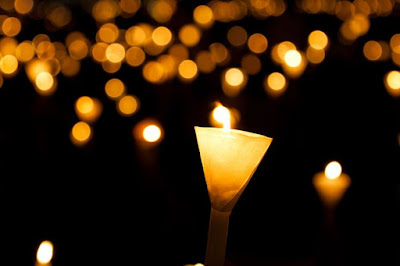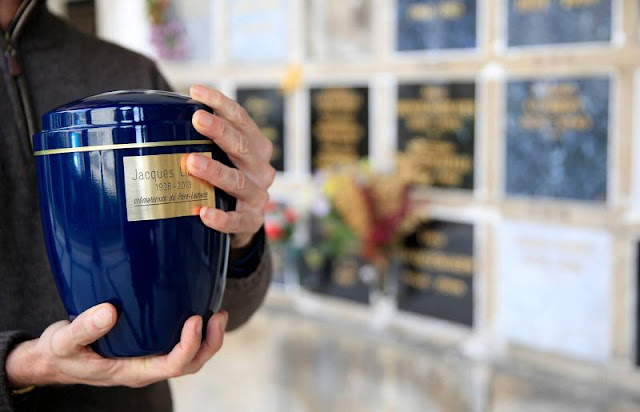Common questions asked related to cremation
The cremation process
The
cremation process can be a little hard, especially when you are doing it for
the first time for a loved one. A traditional burial process has many steps.
You may have difficulty understanding those, especially when you are grieving,
which is not the same with the cremation process. The process for cremation has
been around for almost 2000 years, and it may still be a mystery to many
people. It is because many people have not come across it happening. Usually,
people prefer a traditional burial over cremation, but people are shifting
towards cremation as the population increases.
In
today's world, cremation centers use industrial furnaces designed for
cremation. The whole process for cremation usually takes around 2-3 hours in
total. The crematory has many responsibilities, and the few major ones are
mentioned down below:
● The identification of the dead body is the
crematory's responsibility.
● The operator should be safe.
● Care and respect must be given to the dead
body.
Most
of the cremation centers allow the family to witness the cremation process of
their loved ones. The cremation centers typically have very small areas, which
is why they can not allow people more than a certain amount, so it is always
best to check with the cremation center before inviting family and friends.
Step-by-Step method of cremation
The
body elements are reduced to ashes through a process that exposes the body to
heat, flames, and evaporation. The cremation process takes place in a furnace
designed explicitly for cremating the bodies, known as cremation chamber or
retort. It is essential to provide a container with the body known as a casket.
The crematories usually have caskets made in a way that is appropriate for
cremation or has a very hard cardboard container.
When
the body is into tiny particles, they turn into 'ashes. Interestingly these
ashes only contain bone fragments while other organs and parts of the body
burn. It is important to remember that the furnace in which the body is
cremated should not interfere with the cremation process and do not leave
residues in the ashes. Any incidental by-products of the incineration must not
be included as well. The reduction of body bones is around 3 to 9 pounds of
ashes. The amount of the ashes usually depends upon the size of the body and
the creating authority.
There
are five basic steps for the method of cremation, mentioned below:
The
first step is the identification of the deceased. The authorization is
obtained, and the body is labeled so that no mix-ups happen in the process of cremation.
The
preparation of the body takes place and is entered in the cremator by the
labor.
The
body placed in the container is moved to a cremation chamber or to a retort.
Once
the cremation process is over, the remaining metals are removed, and the particles
of the body are converted into even more fine particles.
The
ashes are then collected and transferred to a container or to a specific urn
provided by the family. The ashes can also be turned into ornament or jewelry
pieces.
How is the identification of the body made?
Are there any processes that ensure that the ashes do not get mixed up with
another body's ashes?
For
proper handling of the body and ensuring there is no confusion, many
crematories form cremation, strict procedures, and rules. The first and
foremost step of every cremation process is to make sure that the crematory has
permission to take care of the cremation. The regulations for identification
vary by state and city. In many cases, crematories hand over some paperwork
that they have to complete in order to provide authorization of the body. This
form or paperwork includes all kinds of questions such as who will pick up the
remains from the crematory and which container the crematory should use to
store the ashes etc.
How is the preparation of the body carried
out?
The
first step for preparing the body for cremation is bathing, cleaning, and
dressing it before the process of identification. The embalming is not
necessary until and unless the body has to be present to the public.
The
next step is the removal of jewelry or metallic items from the body that you
might think may serve as a sign for memory. Prosthetic body parts and medical
devices are also removed that are battery-operated and mechanical to prevent
reaction during cremation. A few items, such as pins, screws, and links, are
not removed, and they remain in place. There are different recycling policies
for medical devices for every facility, but in no case, those devices are used
over any other body again. These medical devices are broken down into small
pieces, melted, or disposed of in some other method.
What sort of container is typically used
for a cremation?
The
use of specially designed caskets for cremation processes, or many cremating
centers use simple hard cardboard boxes. The only rule for the container is
that it should be hard and rigid enough to hold the body and must be
combustible.
The team at ADC would be honored to help you in preparing a
memorial ceremony for your loved one and make sure you don't have to take care
of unimportant things as well as as have any unnecessary burden on your
shoulders during the grieving process.
If you need any help related to the decisions you need to make
for your loved one who passed away, reach out to us today and Call 24/7 For
Compassionate Care at 352-354-4413. We would be honored to help you
with coping with these difficult emotions.




Comments
Post a Comment